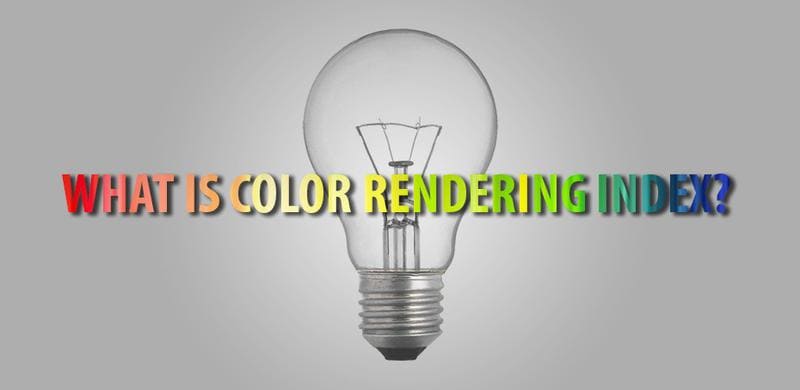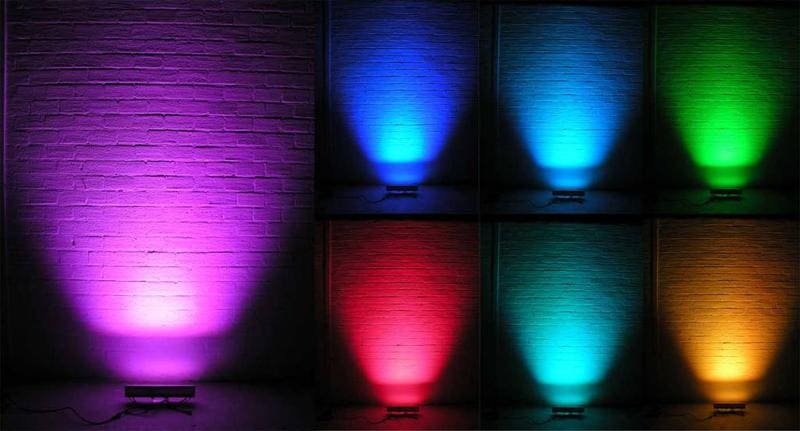Picture this: You’re standing in the lighting aisle, eyes glazed over, trying to decide which bulb won’t turn your living room into a bat cave. You’ve got packaging that mentions “lumens,” another one screams “lux,” and somewhere in the mix, “candela” is thrown around like you’re supposed to be fluent in light physics. Now you’re wondering, “Why does buying a lightbulb feel like solving a riddle from an ancient scroll?”
Here’s the thing: light is complicated. But it doesn’t have to be. Understanding a few simple units of measurement can make all the difference between creating a cozy haven or blinding your guests into submission. Whether you’re lighting up your home, office, or backyard, getting the right balance of brightness, coverage, and intensity is crucial. And that’s where Candela, Lux, and Lumen come in.
These three are the holy trinity of light measurement. They’re the superheroes you didn’t know you needed, each with their own power. Candela, the intensity guru, tells you how fierce that beam is in a particular direction. Lux? It’s the measuring tape for how much light is actually falling on a surface. And Lumens? Well, that’s the all-rounder, the one that lets you know the total glow a light source is kicking out into the world.
In short, these terms aren’t just for tech geeks—they’re your guiding stars to choosing the right lights. Whether you want your bathroom to shine like an operating theater or your living room to feel like a cozy retreat, knowing your Candela from your Lumens ensures you get exactly what you need without the guesswork. So buckle up, because understanding these three light warriors is about to make lighting your space a whole lot easier—and a lot less like an episode of Who Wants to Be a Lightbulb Millionaire?
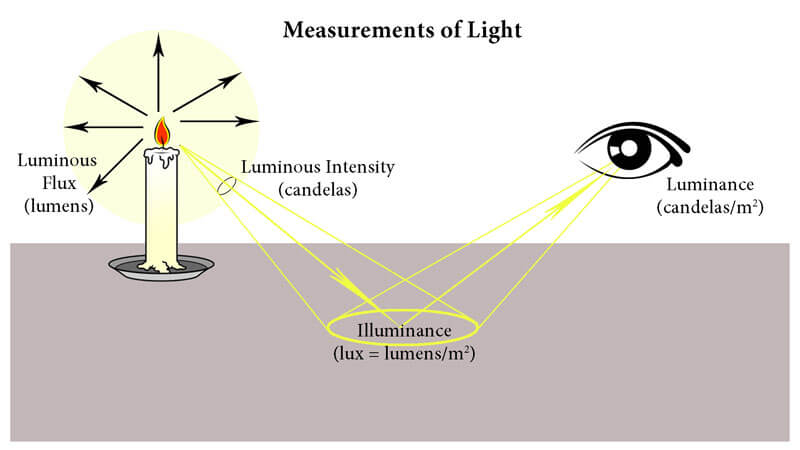
What is Candela?
Candela, or as it’s known in its full splendor, luminous intensity, is the heavyweight champ of directional lighting. This little unit measures how intense a light source is in a specific direction. Think of it like the superhero of the lighting world: focused, powerful, and definitely not wasting any energy illuminating stuff you don’t care about. The term itself comes from “candlepower”—yep, just one humble candle is the inspiration here. One candela equals the brightness of a single candle. So, next time you’re lost in the glow of a romantic dinner, just know: that flickering flame has a solid candela rating.
Applications of Candela
Candela isn’t just for creating ambiance during dinner. It’s the go-to measurement for light sources that need to beam their brilliance in one tight direction. Take spotlights, for example. Whether you’re in a theater highlighting the star of the show or in your backyard, giving your garden gnome the attention it deserves, candela is at work. Laser pointers? You better believe Candela is their best friend, directing that tiny but fierce beam straight at the target (or your unsuspecting cat). And let’s not forget searchlights, the heroes of the night, sweeping the skies or seas with that powerful focused glow.
But candela doesn’t stop there. Oh no, it’s also a big player in astronomy, helping astronomers measure the light intensity of distant stars. And in photography, candela helps photographers figure out the exact light intensity they need for that perfect shot. Even the precise light traveling through fiber optics is measured with candela. It’s everywhere, shining its directional glory on everything from science to selfies.
Candela vs. Lumens
Here’s where things get interesting: candela is all about laser-focused intensity, like that one person at a party who only talks about themselves. Lumen, on the other hand, are the social butterflies of light measurements—they measure the total light output in all directions. If candela is the spotlight, lumens are the floodlight. Imagine standing in a dark room. If you light a match, the brightness in that specific direction is candela. But if you replace that match with a glowing orb that lights up the entire room, now you’re talking lumens.
So, when you’re deciding between a flashlight to navigate a dark alley or a glowing lamp to fill your living room with light, remember: candela will light your path, but lumens will make the whole room glow. Each has its place in the lighting universe, and now, you’re in the know to choose wisely.
What is Lux?
Lux is the silent warrior of lighting. It doesn’t brag like candela or glow with all the fanfare of lumens. No, lux measures something practical: how much light actually lands on a surface. Think of it as the delivery guy of the lighting world—it tells you how much light gets from point A (the source) to point B (your desk, your floor, or your face). Technically speaking, 1 lux equals 1 lumen spread out over 1 square meter. Simple, right? It’s like spreading butter on toast—the more toast (surface area) you have, the thinner the spread (light) gets.
The Effect of Distance on Lux
But lux is a fickle creature. Distance is its nemesis. The further you move from the light source, the less lux you get. Imagine you’re standing under a spotlight. At one meter, you’re basking in 500 lux of glorious, concentrated brightness. But take a step back. Now that same spotlight has to spread its light over a larger area, and the lux begins to drop faster than your Wi-Fi signal during a thunderstorm. The once powerful 500 lux dwindles as the light diffuses, becoming a sad shadow of its former self.
So, if you’re aiming for that perfect well-lit Instagram selfie, remember—closer is always better. Unless you want to look like you’ve been captured under moonlight. Not exactly flattering.
Applications of Lux
Lux is the unsung hero in the quest for properly lit spaces. Whether you’re in an office crunching numbers, assembling gadgets in a factory, or lounging at home with a good book, lux makes sure you’ve got the right amount of light for the job. And there are standards, believe it or not. In the workplace, for example, 500 lux is the sweet spot for offices. It’s bright enough to keep you awake but not so harsh that you feel like you’re working inside a spacecraft.
Factories demand even more—up to 1000 lux—because, let’s face it, no one wants to be squinting while handling heavy machinery. At home, you’re free to choose your lighting vibe, but even there, knowing your lux levels can help set the mood. Go for that perfect ambiance, whether it’s a cozy 150 lux in the living room or a bright 300 lux in your kitchen so you can see what you’re chopping (and avoid any accidental finger dicing).
So, the next time you’re standing in a dimly lit office wondering why everything feels like a scene from a noir film, just think: you’re missing some serious lux. And it might be time to crank up the light, one lux at a time.
What are Lumens?
Lumen are the rockstars of the lighting world. Forget watts, because these days, it’s all about lumens. They measure luminous flux, which is just a fancy way of saying, “How much light is this thing throwing out?” Think of lumens as the total volume of visible light a bulb produces, blasting out in every direction like a light explosion. The higher the lumens, the more dazzling the glow. Simple.
Common Use of Lumens
In your everyday life, Lumen are your go-to metric for choosing light bulbs. Whether you’re trying to light up your living room, your office, or that weirdly dark hallway where all the spiders seem to congregate, lumens give you the numbers you need to make it happen. Want a cozy, dim vibe? Maybe grab a 200-lumen bulb. Looking to create an artificial sun in your kitchen? Go for 500 lumens or more. That 500-lumen bulb? It’s going to shine brighter than a 200-lumen one like it’s had an extra shot of espresso. More lumens, more brightness. It’s that simple.
For comparison’s sake, those tiny nightlights that keep you from stubbing your toes in the dark might have around 20 lumens, while the overhead light in your workspace could crank out 800 lumens. Choose wisely—your mood (and safety) depends on it.
The Raw Lumens Misconception
But here’s where things get shady: raw lumens. This is when manufacturers try to pull a fast one, inflating the numbers by counting how much light the bulb could produce in perfect, fantasy conditions. What they don’t mention? Reality. In the real world, factors like optics, lens clarity, and heat love to team up and dim that brightness. Your 5000-lumen LED light might only end up spitting out 2500 lumens once it’s all warmed up and behind a few fancy lenses.
It’s the lighting equivalent of bragging about horsepower when you’re driving through rush-hour traffic—technically accurate, but not very useful when you just want to get home before dark.
So, the next time you’re buying bulbs, keep an eye out for manufacturers tossing around “raw lumens” like confetti. What you’re really looking for is useful lumens, the ones that actually light up your life. Because in the end, it’s not about how much light your bulb can theoretically produce—it’s about how much light you actually get.
The Relationship Between Candela, Lux, and Lumens
The world of light is a little like a love triangle between Candela, Lux, and Lumen—each playing a part, each having their own unique talents. Understanding how they interact is key to unraveling the mystery of lighting measurements.
Candela vs. Lux
Let’s start with Candela Und Lux. Imagine you’ve got a laser pointer (Candela’s specialty)—its beam is focused, intense, and sharp enough to drive a cat crazy. Candela measures that fierce intensity in one very specific direction, like a light warrior charging forward with tunnel vision. Now, Lux? Lux is more of a chilled-out surfer, laid-back and focused on how much of that light actually lands on the ground—or any surface, really. It measures illuminance: how much light falls on a square meter of space.
Here’s where the relationship gets tricky. Lux changes with distance. The further you are from the light source, the more that light has to spread out and the less intense it becomes. Candela doesn’t care how far away you are; it’s still bragging about its directional strength. But Lux? Move back a few meters, and suddenly, what was once blinding brightness becomes as faint as a full moon behind clouds.
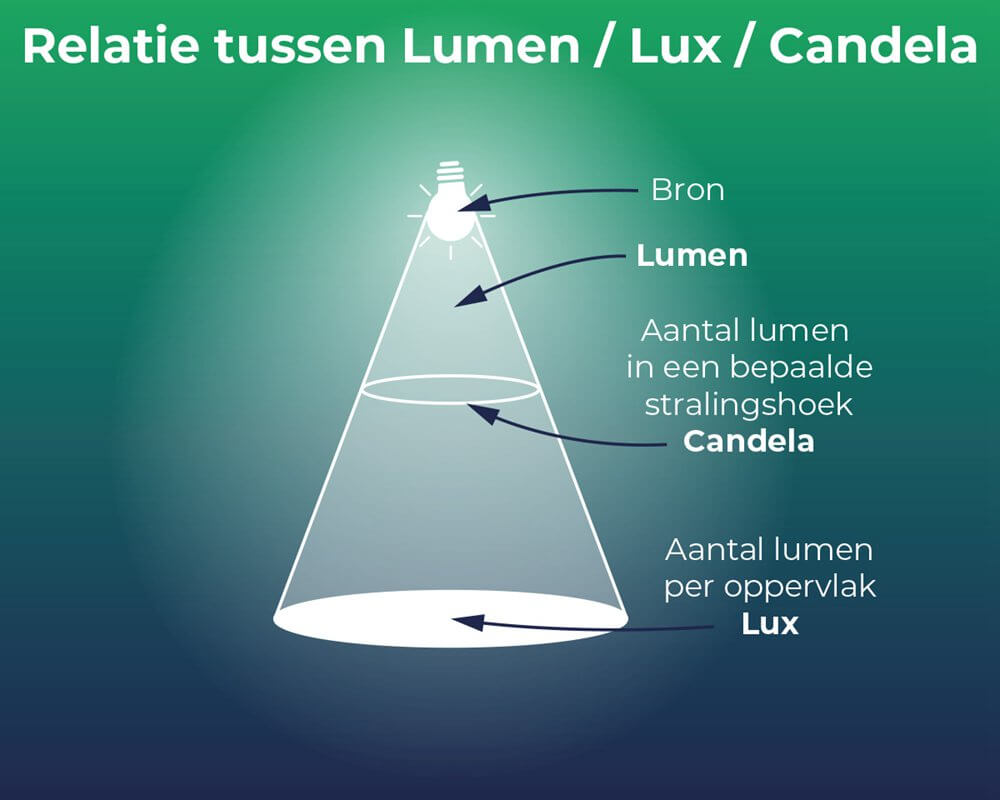
Candela vs. Lumens
Now, let’s pit Candela against Lumen. Candela might be all about that tight, intense beam, but Lumen—oh, Lumens wants to be everywhere at once. Lumens measures the total light output a source emits in all directions. Think of it as light’s total energy, the big-picture glow.
For example, a spotlight could have a super high Candela rating because it directs its beam like a laser-cut sword through darkness. But in terms of Lumens? It might not have that much, because it’s concentrating all its power in one place. On the other hand, a floodlight spreads its glow far and wide like sunshine after a storm—less intense in any one direction, but with a higher lumen count because it’s lighting up the whole party. One’s a sniper, the other’s a disco ball.
Lux vs. Lumens
Here’s where Lux Und Lumen cozy up a little more. Lux is actually derived from Lumens, but with a twist. Lux measures how bright a surface is, while Lumens measures how much light is being thrown out into the world. The key difference? Surface area. It’s like this: 1 Lux = 1 Lumen per square meter.
If you’ve got a 1000-lumen light, that light will be nice and bright over a small area, but spread it out over a bigger space and the Lux will drop faster than a mic at a rap battle. The more space the Lumens have to fill, the dimmer the area becomes.
So, whether you’re lighting a stage, a factory floor, or your cozy reading nook, understanding how Candela, Lux, and Lumens work together (and sometimes against each other) ensures you’re casting the perfect glow on your world.
Factors Affecting Candela, Lux, and Lumens
Light may seem simple—flick a switch, and voilà!—but when you dig into the science behind those glowing rays, it’s a wild ride. Candela, Lux, and Lumen all react to different environmental conditions in ways that would make even the sun pause for thought. Let’s take a look at what throws these lighting champions into flux (pun totally intended).
Distance
First up, distance. Imagine you’re standing in front of a bonfire, feeling the warmth of that flickering glow. Step back a few feet, and while the fire is still raging at the same intensity (that’s Candela, by the way), you’ll start to notice it’s not quite as warm or bright. That’s Lux in action. The further you move from the light source, the more that glorious brightness has to spread out. Lux decreases, leaving you in a twilight zone of diminishing light. Candela? Unbothered. Still blazing in its singular, directional glory, regardless of how far you wander off.

Abstrahlwinkel
Now let’s talk about beam angles. Picture a flashlight with a tight, focused beam. That narrow cone of light has Candela pumped up to maximum. It’s intense, like a spotlight aimed straight at the stars. However, that intensity is so concentrated, it only illuminates a small area—meaning the Lux is focused and sharp, but not very widespread. Now, widen that beam, and you’ve got a broader, gentler light that covers more ground. The Candela takes a hit because it’s spread thinner, but the Lux still does its job, albeit over a bigger surface. In short: tighter beam, higher Candela; wider beam, more surface covered by Lux.
Efficiency
And then there’s efficiency, the unsung hero of modern lighting. Enter the LED—the reigning monarch of the light world. LEDs are smart little overachievers, capable of producing more lumens (total light output) while guzzling far less power than those ancient incandescent dinosaurs. They don’t waste energy heating up (nobody’s got time for that!), which means they’re churning out higher brightness with a fraction of the effort. This is why an LED bulb can light up a room like a mini supernova while barely denting your electricity bill. It’s all about cranking out more Lumen per watt, and LEDs are the undisputed champs in this efficiency game.
So next time you’re selecting lights for your home, office, or a dramatic backyard setup, remember: distance matters, beam angle can make or break the mood, and efficiency means you can go brighter without breaking the bank.
Choosing the Right Lighting
When it comes to lighting, one size definitely does not fit all. You don’t want your cozy bedroom lit like a football stadium, and your kitchen shouldn’t be reminiscent of a medieval dungeon. Choosing the right lighting is about matching the glow to the vibe, and luckily for you, there’s a method to this brightness madness. Enter Lumen, Lux, and Candela, your new best friends in the quest for perfect illumination.
Use Lumens for General Lighting
Let’s start with Lumen, the master of general lighting. Think of lumens as your overall light count, like scoops of ice cream—more scoops, more sweetness. The same goes for lumens: more lumens, more brightness. Different rooms have different appetites for light, so you’ll need to measure lumens per square foot.
Take the kitchen, the heart of your home. Here, you need brightness to slice and dice without slicing fingers. You’ll want about 70 lumens per square foot to make sure you can see what you’re doing. So, if your kitchen is a generous 100 square feet, you’ll need 7000 lumens lighting it up. For the bedroom? You don’t need to blind yourself while finding your pajamas. Keep it cozy with around 20 lumens per square foot. If your bedroom is 150 square feet, you’re looking at a mellow 3000 lumens.
The key with lumens is balance—too little, and you’re squinting like you’re in a mystery novel, too much, and you might feel like you’re on stage at a concert.
Use Lux for Task Lighting
Now, onto Lux. Lux is for those moments when you need more precision. It’s the spotlight on your desk while you’re working, or the light over your workbench when you’re trying to fix that thing that’s been broken for months. Lux tells you how much light is actually landing on a surface, so for task lighting, it’s your go-to metric.
If you’re in an office, you’ll want around 500 lux to keep things bright but not blinding. For more demanding tasks—say, in a workshop where you’re working with tools or in a kitchen where you’re crafting your next culinary masterpiece—you might need upwards of 1000 lux. And for that level of precision, you’ll want a lux meter to help you measure if your lighting is up to par. After all, there’s nothing worse than trying to work under dim, inadequate lighting (except maybe doing it without coffee).
Use Candela for Directional Lighting
And last but not least, let’s talk Candela—the rockstar of directional lighting. If lumens and lux are about spreading the love, candela is all about intensity. It’s your main player for spotlights, searchlights, and any lighting that needs to be laser-focused. Candela measures how strong the light is in one particular direction, making it the hero of theater stages, outdoor events, and yes, even those dramatic accent lights in your living room.
Let’s say you need a spotlight to illuminate that prize-winning rose bush in your garden. You don’t need lumens flooding the entire yard; you need a candela-packed beam of brilliance aimed right at your horticultural masterpiece. Or, if you’re setting up security lights, candela steps up to the plate again, making sure those beams are piercing the night with focused intensity.
So, when you need lighting that’s all about direction, think Candela. It’s not about filling the room with light, it’s about lighting up exactly what matters—like a spotlight on center stage.
By choosing the right lighting for each space—lumens for general ambiance, lux for focused tasks, and candela for pinpoint direction—you’ll turn your home into the perfectly lit haven you’ve always dreamed of.
Candela, Lux, and Lumens in Real-World Scenarios
Understanding Candela, Lux, and Lumen in theory is great, but let’s be honest—no one sits around in their living room pondering the luminous intensity of their floor lamp. It’s when these light units hit the streets, workspaces, and modern LED fixtures that the real magic happens. Let’s take a tour through how these units illuminate your world.
Outdoor Lighting
Outdoor lighting is like the wild west of illumination—untamed, vast, and in need of the right tools to cover all that space. When it comes to lighting up your yard, parking lots, or streets, floodlights Und streetlights rely on a cunning combination of Candela, Lux, and Lumen to get the job done.
Floodlights? They’re the Swiss Army knives of outdoor lighting, using a broad beam to cover large areas. Here’s where Lumen come into play—floodlights need a high total light output to blanket a space with brightness. But they also need lux, because the actual brightness hitting the ground needs to meet certain standards. And when it comes to candela, these lights aren’t about laser precision. They’re more like the warm embrace of a bonfire, casting a wide net of light.
Streetlights, on the other hand, need a little more focus, but not too much. They’re designed to provide steady, consistent lighting over roads and sidewalks. Lumens take care of the overall brightness, while lux ensures that light reaches the ground in just the right way—enough to make you feel safe, but not enough to fry your retinas when you look up. And candela? Well, they keep it cool, maintaining the right balance of directional intensity so that the light isn’t wasting itself on the stars.
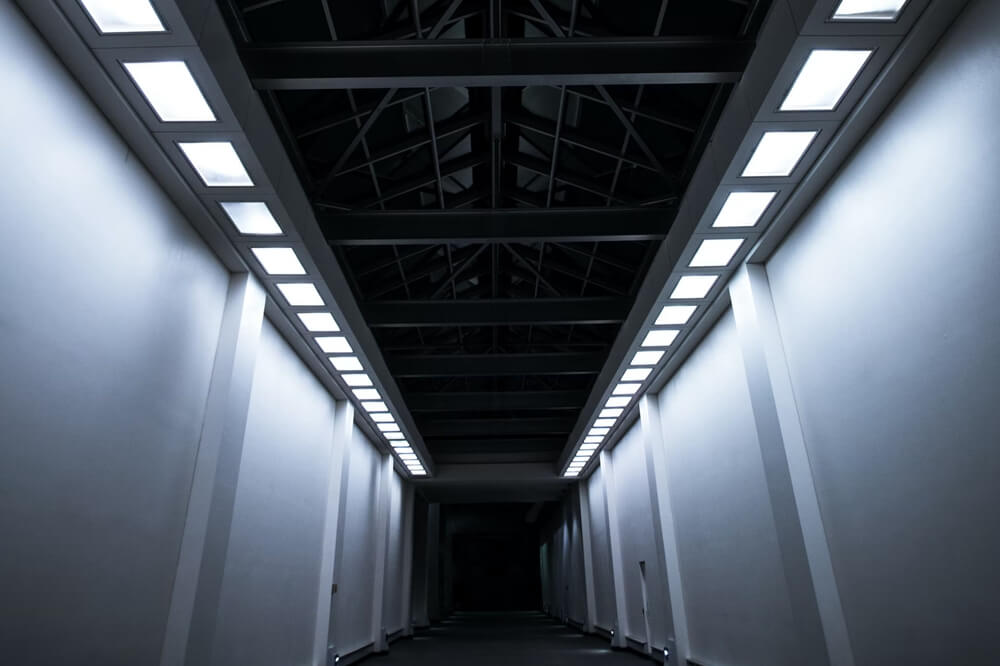
Workplace Lighting
The workplace is where lux really steps into the spotlight (pun fully intended). Whether you’re crunching numbers in an office, operating heavy machinery in a factory, or performing delicate surgeries in a medical facility, lighting is crucial to staying productive—and safe.
In your typical office environment, you’ll need around 500 lux. Enough to keep you awake during that 3 PM slump but not so intense that you feel like you’re under interrogation. In factories, where precision and attention to detail are non-negotiable, we’re looking at 750 to 1000 lux. This ensures workers can see exactly what they’re doing without squinting at machinery or missing important details.
Medical facilities? They take things up a notch. 1000 lux is just the beginning in operating rooms or labs. When someone’s about to cut you open, you definitely want them to see everything clearly. Lux levels here ensure accuracy, safety, and a low chance of surgical “oops” moments.
LED-Beleuchtung
Welcome to the LED revolution, where more light doesn’t mean more energy. These bright little wonders have changed the game, delivering sky-high lumen output while sipping power like it’s happy hour. LEDs have one mission: give you more bang for your buck in terms of brightness, and they do it by converting electricity into light with almost no wasted heat.
Here’s where a crucial tip comes in: Forget about watts. We’re in the era of Lumen now. Back in the day, you’d choose a 60-watt bulb for your living room, thinking it would be bright enough to keep things cozy. But with LEDs, watts are just a footnote. What you really care about is how many Lumen you’re getting.
For example, a 9-watt LED bulb might crank out 800 lumens—the same as an old-school 60-watt incandescent, but with a fraction of the energy consumption. That’s the beauty of LEDs: lower power draw, higher brightness, and a much smaller electricity bill at the end of the month.
So, next time you’re shopping for bulbs, stop squinting at the wattage. Look for Lumen, and let the LEDs light up your life with brilliance and efficiency.
Abschluss
Light may seem simple, but it’s got more layers than an onion in a five-star restaurant. And understanding the differences between Candela, Lux, and Lumen is your golden ticket to making your lighting decisions a whole lot brighter (pun very much intended). These three amigos each have a job to do, and knowing when to rely on each one is the key to lighting up your world—literally.
Need to measure the intensity of light in a specific direction? That’s Candela flexing its muscle. Think spotlights, laser pointers, or any light with a serious focus. Want to know how much light is actually hitting a surface? Say hello to Lux, the unit that tells you how well-lit a workspace or room is. It’s perfect for making sure you’re not working in the dark, unless you’re Batman. And when it comes to total brightness—how much light a bulb or fixture is actually giving off in all directions—Lumen are the name of the game. The higher the lumens, the more you’re lighting up the room (and your life).
So here’s the bottom line: When you’re picking lights, don’t guess—measure. Want a cozy, well-lit living room? Check the Lumen. Need some intense, focused lighting for your yard’s security system? Candela is your go-to. And if you’re setting up an office or workspace, break out the lux meter to ensure you’ve got the right level of illuminance for maximum productivity.
By understanding these units, you can craft the perfect lighting plan for any situation. And remember—brightness is more than just flipping a switch; it’s a science. One that you’ve now mastered.
